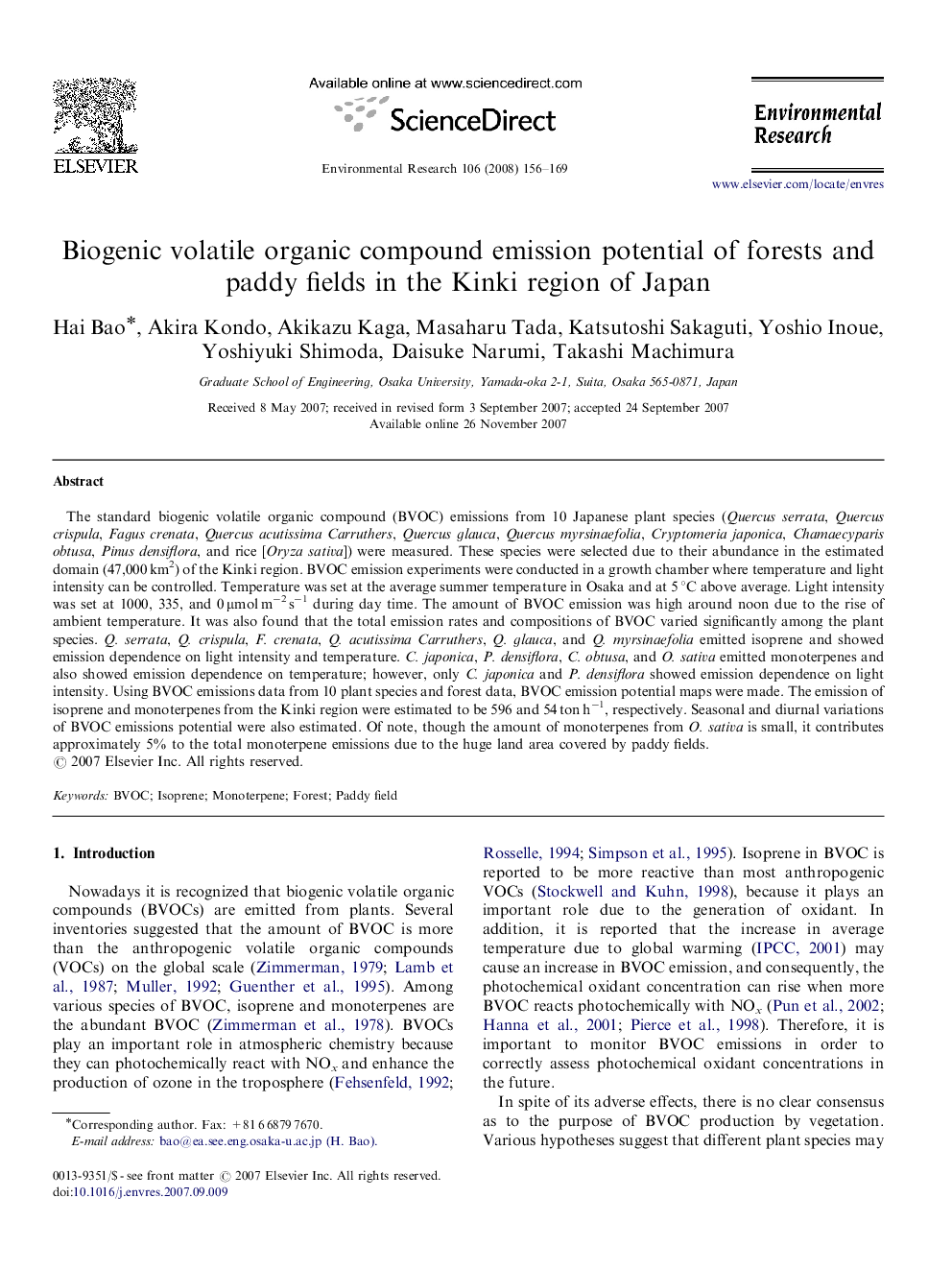| کد مقاله | کد نشریه | سال انتشار | مقاله انگلیسی | نسخه تمام متن |
|---|---|---|---|---|
| 4470786 | 1314447 | 2008 | 14 صفحه PDF | دانلود رایگان |

The standard biogenic volatile organic compound (BVOC) emissions from 10 Japanese plant species (Quercus serrata, Quercus crispula, Fagus crenata, Quercus acutissima Carruthers, Quercus glauca, Quercus myrsinaefolia, Cryptomeria japonica, Chamaecyparis obtusa, Pinus densiflora, and rice [Oryza sativa]) were measured. These species were selected due to their abundance in the estimated domain (47,000 km2) of the Kinki region. BVOC emission experiments were conducted in a growth chamber where temperature and light intensity can be controlled. Temperature was set at the average summer temperature in Osaka and at 5 °C above average. Light intensity was set at 1000, 335, and 0 μmol m−2 s−1 during day time. The amount of BVOC emission was high around noon due to the rise of ambient temperature. It was also found that the total emission rates and compositions of BVOC varied significantly among the plant species. Q. serrata, Q. crispula, F. crenata, Q. acutissima Carruthers, Q. glauca, and Q. myrsinaefolia emitted isoprene and showed emission dependence on light intensity and temperature. C. japonica, P. densiflora, C. obtusa, and O. sativa emitted monoterpenes and also showed emission dependence on temperature; however, only C. japonica and P. densiflora showed emission dependence on light intensity. Using BVOC emissions data from 10 plant species and forest data, BVOC emission potential maps were made. The emission of isoprene and monoterpenes from the Kinki region were estimated to be 596 and 54 ton h−1, respectively. Seasonal and diurnal variations of BVOC emissions potential were also estimated. Of note, though the amount of monoterpenes from O. sativa is small, it contributes approximately 5% to the total monoterpene emissions due to the huge land area covered by paddy fields.
Journal: Environmental Research - Volume 106, Issue 2, February 2008, Pages 156–169